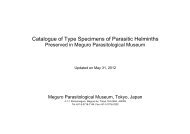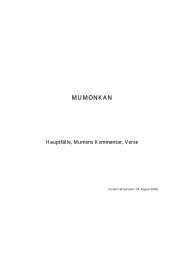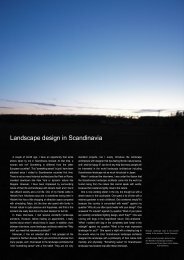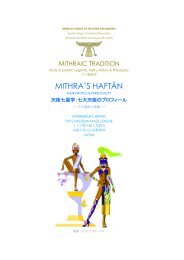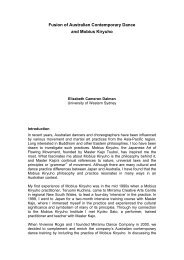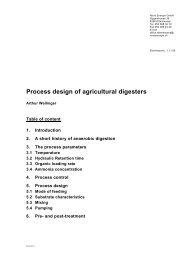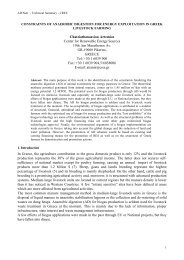III. No-Till Farming Systems - nifty
III. No-Till Farming Systems - nifty
III. No-Till Farming Systems - nifty
You also want an ePaper? Increase the reach of your titles
YUMPU automatically turns print PDFs into web optimized ePapers that Google loves.
514<br />
for increased productivity and improved land<br />
quality. Soil moisture utilization for enhanced<br />
crop production can be improved through maximizing<br />
the capture, infiltration and storage of<br />
rainfall water into the soil. An absorptive, organic<br />
matter-rich and biologically diverse soil can be<br />
achieved through the application of the four principles<br />
of Conservation Agriculture as described<br />
above.<br />
This 257-page book represents the first Italian<br />
publication describing these principles, technologies<br />
and methodologies. It uses clear terminology,<br />
and provides numerous practical examples of the<br />
use of CA to reduce soil erosion and increase<br />
productivity in both annual and perennial crops.<br />
The book has three sections. The first section deals with the agronomic and environmental<br />
concepts and principles of CA as an integrated production system for<br />
water and soil management and conservation. There is also a general overview of<br />
CA experience in Italy, Europe and worldwide. The Visual Soil Assessment<br />
(VSA) method is also described as a practical tool for soil quality monitoring.<br />
The second section describes integrated management systems in CA (annual<br />
cropping systems, crop rotation techniques, and guidelines for transition from<br />
conventional to conservation agriculture). This is followed by strategies for the<br />
adoption of CA in Italy for several annual crops such as durum and winter wheat,<br />
corn, soybean, sunflower, canola, vegetables, field horticulture and fruit crops, as<br />
well as long-term crops such as olives and viticulture. Suggestions are given to<br />
help farmers make the transition from conventional to conservative agriculture.<br />
The third section describes in one chapter developments in the mechanical tools<br />
and equipment for CA. In particular it reports on new technologies for machinery<br />
such as no-tillage, and shallow and deep methods of minimum tillage. The next<br />
chapter provides an economic analysis of costs and profitability of CA. The concluding<br />
chapter highlights the energetic-economic comparative advantages of<br />
CA, based on a study conducted in Italy for annual crops (corn, wheat and soybean).<br />
The book provides an in-depth discussion of the most important issues in soil<br />
erosion phenomena that to a large degree are responsible for the landscape we see<br />
today in Italy. Erosion accounts for the formation of plains, valleys and plateaux,<br />
the levelling of mountains, and the accumulation of the material that has been<br />
eroded from them. Despite the importance of erosion in creating the very areas of<br />
our country now used for modern agriculture, accelerated erosion, in which soil<br />
erosion outpaces land formation, can have detrimental, even disastrous conse-



